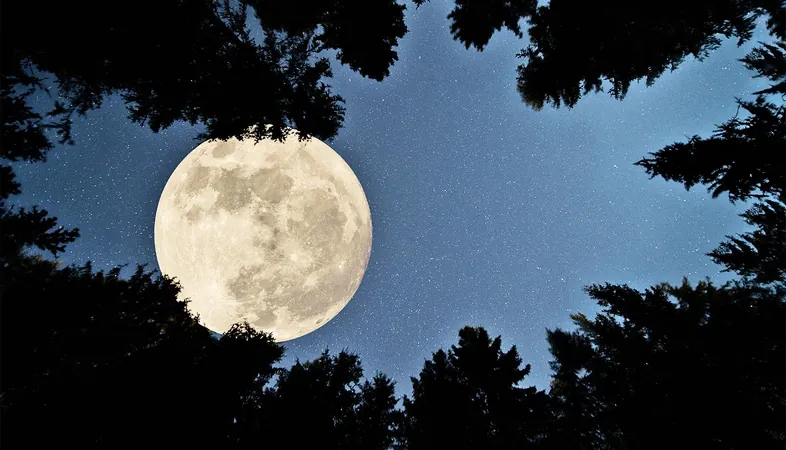
Shocking Study Reveals Car Crashes with Wildlife Surge During Full Moons!
2024-10-14
Author: Jia
A groundbreaking new study highlights a staggering 45.8% increase in vehicle collisions involving wildlife during full moon nights. This alarming trend has been captured in extensive research conducted by Kentaro Iio, a former Texas A&M University student, and Dominique Lord, a professor specializing in civil and environmental engineering.
Over a decade of collision data across Texas was meticulously analyzed, comparing the frequency of wildlife-vehicle accidents occurring during the brilliant full moon nights versus the much darker new moon nights. Remarkably, collisions not involving wildlife showed no significant variations, emphasizing the unique impact of lunar illumination on animal movement and driver behavior.
Why Does This Happen?
The researchers stress the need for heightened driver awareness during these luminous nights. “Although visibility is enhanced, it is still night,” Lord cautions. Factors contributing to this spike might include increased wildlife activity and potential driver fatigue, making this an area ripe for further exploration by specialists in both transportation safety and animal behavior.
Notably, regions like Spain, Canada, and Lithuania have reported similar findings, indicating a global pattern worth investigating. Collisions in rural parts of Texas surged dramatically during the full moon, with some regions experiencing increases between 57.8% and an eye-watering 125%! The High Plains region, largely comprised of the Texas Panhandle, recorded some of the highest spikes.
Interestingly, the capital area of Texas was the sole region that exhibited a lower relative risk, although the difference wasn't statistically significant—a reminder of how urban settings can alter wildlife behavior due to light pollution and lower wildlife density.
What Can Be Done?
This critical research elucidates the need for enhanced safety measures on highways, particularly in rural areas. Potential initiatives could involve improved lighting, the installation of wildlife warning reflectors on rural roads, and increased emergency services presence on nights of full moons.
Although this study did not identify specific wildlife species involved in these collisions, future research is encouraged to fill in the gaps using more refined data collection methods that take into account traffic volumes, illumination intensity, and wildlife encounters per region.
With the knowledge acquired from this study, it becomes clear that both drivers and policymakers must heed this lunar warning—especially as the full moon rises above the horizon!


 Brasil (PT)
Brasil (PT)
 Canada (EN)
Canada (EN)
 Chile (ES)
Chile (ES)
 España (ES)
España (ES)
 France (FR)
France (FR)
 Hong Kong (EN)
Hong Kong (EN)
 Italia (IT)
Italia (IT)
 日本 (JA)
日本 (JA)
 Magyarország (HU)
Magyarország (HU)
 Norge (NO)
Norge (NO)
 Polska (PL)
Polska (PL)
 Schweiz (DE)
Schweiz (DE)
 Singapore (EN)
Singapore (EN)
 Sverige (SV)
Sverige (SV)
 Suomi (FI)
Suomi (FI)
 Türkiye (TR)
Türkiye (TR)